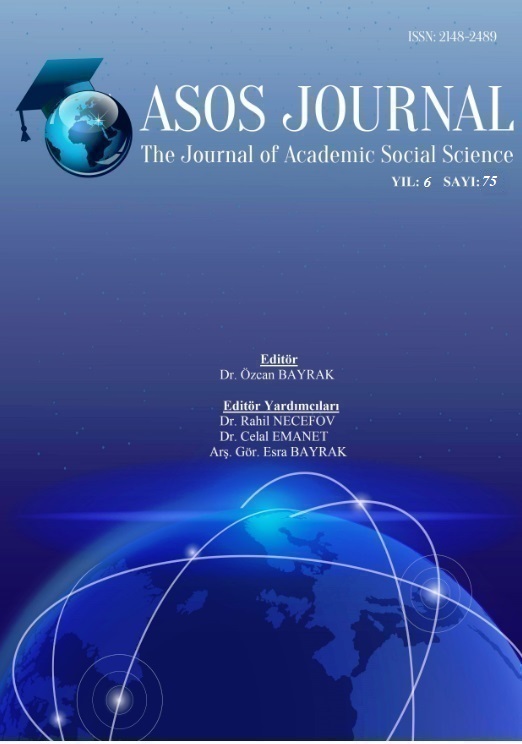Author :
Abstract
Bu çalışmanın amacı Ebu'l Muzaffer tarafından kaleme alınan "Tabîbnāme " adlı eserin başlıca dil özelliklerinin incelemesidir. Tabîbnāme, Orta Asya'dan Anadolu'ya kadar uzanan bir bölgede Oğuz lehçesinin etkisini devam ettirmekte önemli bir rol oynayan Oğuzların Kınık Boyuna ait bir eserdir. Büyük Selçuklu eseri olan Tabîbnāme, hem ses ve yapı özellikleriyle hem de söz varlığıyla Oğuz Türkçesi özellikleri taşımaktadır. Tabîbnāme'de Kınık boyuna ait bir damga (mühür) bulunmaktadır. Bu özellikleriyle Tabîbnāme, Oğuz Türkçesinin XII. yüzyıldaki dil özelliklerini göstermektedir. Başka bir deyişle bu eser, Türkiye Türkçesinin temelinin Oğuzcaya ve Oğuzların ise Kınık Boyuna dayandığına dair önemli bir belge görünümündedir. Ayrıca Büyük Selçukluların Türkçe eser verdiğinin tanıklayan bu tek yazma eser, o döneme ait başka eserlerinde olabileceğini düşündürmektedir.
Keywords
Abstract
The aim of this study is to examine the main language features of Tabîbnāme, which was received by Ebu'l Muzaffer. Tabînnāme is a work belonging to the Kınık (Qinik) Tribe of Oghuzes, who played an important role in maintaining the influence of the dialect of Oghuz in a region extending from Central Asia to Anatolia. Tabîbnāme, the great Seljuk work, carries Oghuz Turkic features with both phonetic and morphological features and vocabulary. In addition to being rounded in the words and suffixes considered as one of the basic voices characteristics of Oğuz Turkish, there are also examples of flattening. There is a stamp (seal) belonging to the Kınık size in Tabînnāme. With these characteristics Tabîbnāme, Oguz Türkçesininin XII. It shows the language characteristics of the century. In other words, this work, the Proto Oghuz Turkey and the Turkish Oguz is an important document of the basic view that based on the Qinik tribe. In addition, this single writing work that witnesses that the Great Seljuks gave Turkish works suggests that it may be in other works of that period.





